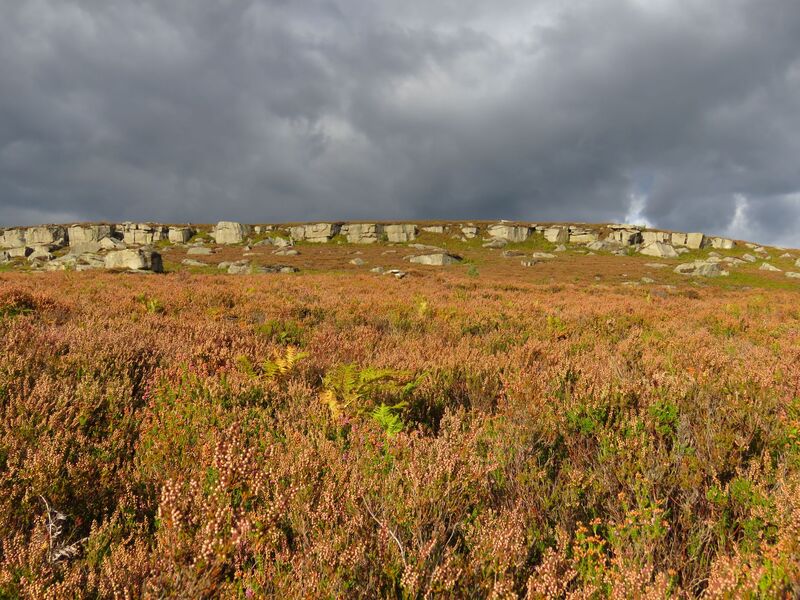 Heather moors 16 September 2022
Heather moors 16 September 2022 Go back, go back say the red grouse. For a while, we share the solitude of their beautiful heather moorland. I conjure the scene, delving its secrets, making it last. The fleeting magic of the afternoon melds with other flights to the heather and memories shared. We could go back and go further but we might not replicate such a rare day with perfect weather and light that is constantly changing as it floods over the rich autumn colours of the heather.
Amongst blue bilberries there are pinkish white flowers and green fruits ripening to glossy red cowberries. Offset by lichened rock, they are so lovely and half-hidden by rosy bilberry leaves.
Magenta flowers of bell heather fade to brownish seed-heads and ling is fading. It's a seasonal transition and we’re just in time for fruit that is plump and ripe. I’d like to come back to see the changing tints of the heather moor later in autumn. I love the big skies and the vistas up on a heather moor on such a day, and the diversity and detail in the richly luxuriant ericas of a secret place seldom visited.
At a time of national mourning for the death of Her Majesty Queen Elizabeth II we reflect upon tradition and change. With fondness, I look back on gathering bilberries in Fjaerland, Norway. Richard Mabey’s Flora Britannica tells of the almost lost l tradition of taking to the heather to gather bilberries. Recently in Solway, we were gifted with ale flavoured with heather and it was delicious. Red grouse feed upon heather and we watch them dipping down to gather seeds and to hide. I recall seeing heather used to make ropes, and for roofing. Deep heather feels springy and comfortable enough to make a mattress and in the past heather was used in this way. Only later do I remember finding a rosy young adder in September heather. As we leave, a hare halts by a gate and sits watching us.
It's a rare glimpse into something precious. As we leave, we see signs saying no fires, no barbecues, no camping- reminding us of the fragility of this wonderful habitat. Climate Change brings extreme weather- like the extreme temperatures of this summer and the wildfires that have caused so much destruction in Europe. If fire took hold in the deep peat of the moorland of the Yorkshire Dales something infinitely precious would be lost.
Radio 4 Book of the week is Annie Proulx Fen Bog and Swamp. It tells of the importance of this diminishing habitat.
'I think this is Cowberry Vaccinium vitis-idaea, the leaves are paler on the underside and glossy on the upper whereas in Bearberry the leaves have a very conspicuous network of veins on the underside of the leaf. I think the flowers are more bell shaped as in your photograph in Cowberry. I also think there is a subtle difference in the shape of the berries with Arctostaphylus having slightly smoother/flatter top.'
Cowberry is also known as lingonberry. The name originates from the Swedish name lingon for the species, and is derived from the Norse lyngr, or ling the name for heather.


















 RSS Feed
RSS Feed